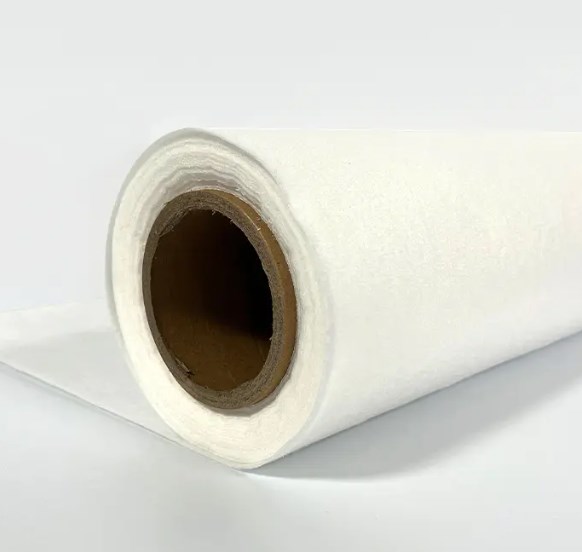2025-06-01
In today's manufacturing environment that emphasizes both safety and environmental protection, Flame Retardant Nonwoven Fabrics have become the focus of attention in many industries. This type of material not only has excellent flame retardant properties, but also retains the advantages of nonwoven fabrics, such as lightness, breathability and easy processing. It is widely used in home furnishing, construction, transportation, medical and other fields.
What is flame retardant nonwoven fabric? Material composition determines performance
Flame retardant nonwoven fabrics are a type of functional material made by adding flame retardants to nonwoven fabrics, or directly using flame retardant fibers (such as aramid, modified polyester fibers, flame retardant viscose, etc.). Its notable feature is that it will not burn quickly or produce dripping when exposed to open flames, and it has the ability to delay the spread of flames.
Common flame retardant treatment methods include:
Additive flame retardant treatment: adding flame retardants during the polymer spinning process;
Finishing flame retardant treatment: applying flame retardants by dipping, coating, etc. after the non-woven fabric is formed;
Body flame retardant technology: selecting polymer materials with inherent flame retardant properties, such as poly(p-phenylene terephthalamide) (aramid), etc.
Multiple application scenarios: industry expansion of flame retardant non-woven fabrics
1. Construction and interior decoration: improving the fire protection level of the living environment
The demand for fireproof materials in the construction industry continues to grow, especially in public places such as office buildings, hotels, and hospitals, which puts forward higher flame retardant requirements for materials such as curtains, carpets, and wall decorations. Flame retardant non-woven fabrics are widely used in insulation cotton, ceiling base fabrics, insulation layer materials, wall fireproof decorations and other parts.

2. Transportation interior: increasingly stringent safety standards
In the manufacture of transportation vehicles such as high-speed rail, airplanes, subways, and cars, flame retardant materials have become mandatory regulations. Flame-retardant non-woven fabrics are used in seat pads, interior walls, ceilings, sound insulation cotton, fire blankets and other parts, which not only improves passenger safety, but also facilitates the lightweight design of materials.
3. Personal protection and industrial safety: building a safety barrier
Used in the production of flame-retardant protective clothing, fire-proof hoods, fire suit linings and other personal protective equipment, flame-retardant non-woven fabrics can effectively reduce the risk of personal injury in high temperature or fire environments, and are particularly suitable for high-risk industries such as petroleum, chemical, and electricity.
4. Medical and home textile fields: taking into account safety and comfort
The application of flame-retardant non-woven fabrics in hospital sheets, surgical pads, disposable surgical gowns, fire-proof mattress covers and other products combines the advantages of hygiene, flame retardancy and degradability. In terms of home use, such as curtains, sofa linings, children's mattresses, etc., the requirements for flame retardant properties are also gradually increasing.

Key technical points: from fiber selection to post-finishing treatment
The key to the manufacture of flame-retardant non-woven fabrics lies in the scientific combination of material selection and flame retardant treatment methods. The main technical paths include:
Fiber selection: Select flame-retardant polyester, aramid, polypropylene fiber and other raw materials with flame-retardant properties;
Web forming method: Use hot air, hot rolling, spunlace and other non-woven fabric processes, and adjust the thickness and strength according to the purpose;
Flame retardant treatment process: Including halogen flame retardants (gradually replaced), phosphorus nitrogen halogen-free flame retardants and other environmentally friendly solutions;
Composite processing: Compound with aluminum foil film, polyester film or foam and other materials to improve multifunctional properties such as heat insulation and waterproofing.
Flame retardant grade and standard: Ensure safety of use
Different countries have different testing standards for flame retardant materials. Common standards include:
UL94 (USA): used to evaluate the combustion performance of plastics and their products;
EN ISO 11612 (Europe): Heat and fire resistance test of protective clothing;
GB 8624 (China): Classification standard for combustion performance of building materials;
FMVSS 302 (automotive industry): Flame retardant standard for automotive interior materials.
Products with authoritative testing and certification are easier to promote and apply in the global market.
Future development trend: moving towards environmental protection, high performance and multi-function
As the concept of green environmental protection is deeply rooted in people's hearts, flame-retardant non-woven fabrics will develop in the following directions in the future:
Halogen-free environmentally friendly flame-retardant system: reduce the impact on the environment and human body;
Degradable flame-retardant fiber: such as PLA flame-retardant material, taking into account sustainability;
Multifunctional integrated design: integrating flame retardancy, waterproofness, antibacterial and breathability;
High-performance flame-retardant fiber development: such as PBO, carbon fiber reinforced non-woven materials;
At a time when many industries are putting forward higher standards for material safety performance, flame-retardant non-woven fabrics are gradually upgrading from traditional protective materials to representatives of high-end functional materials with their lightweight, high efficiency, safety and customizable characteristics. In the future, driven by the continuous development of new material technologies, flame-retardant non-woven fabrics will continue to expand their application boundaries and bring safer and greener solutions to more industries.